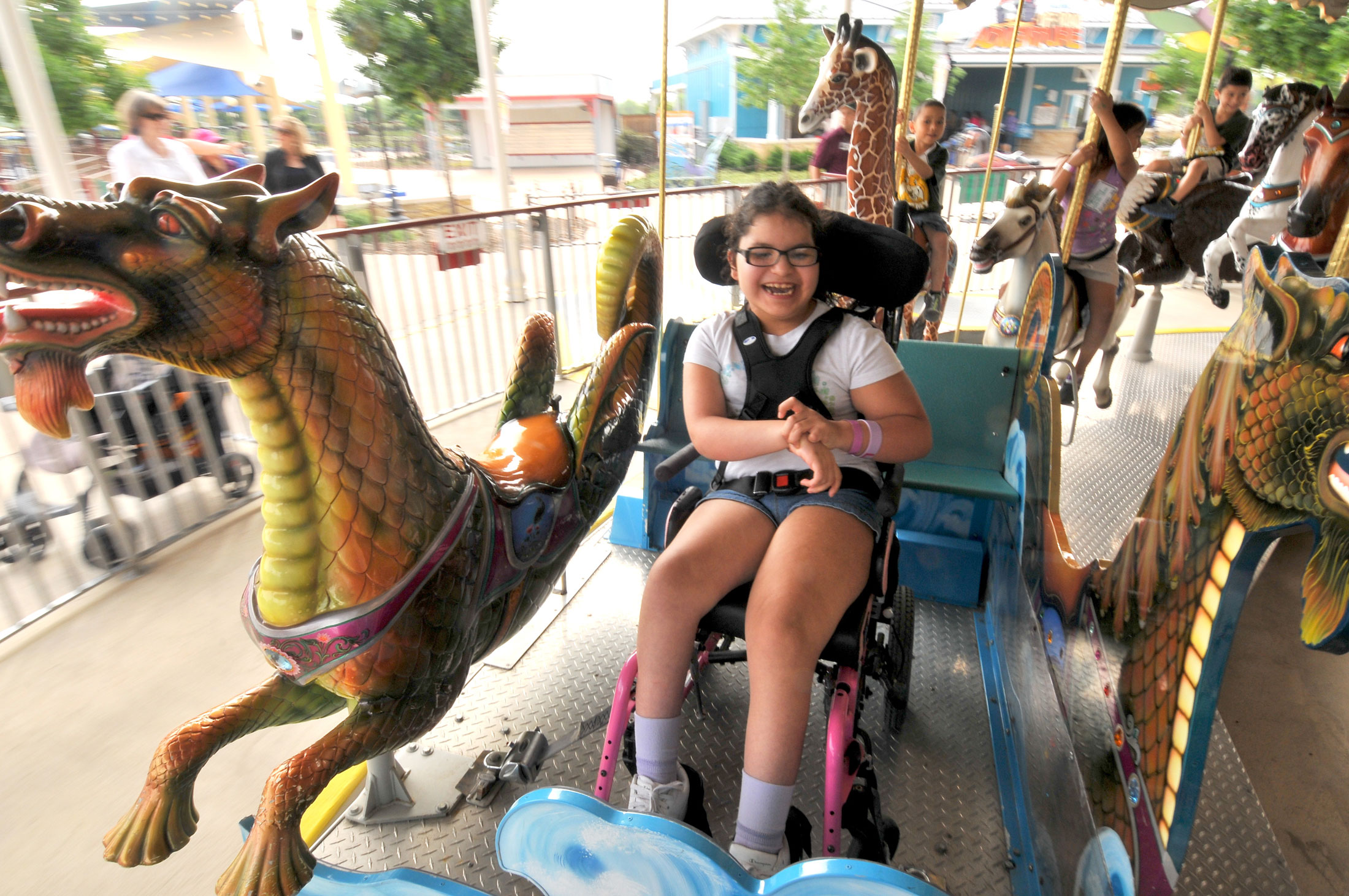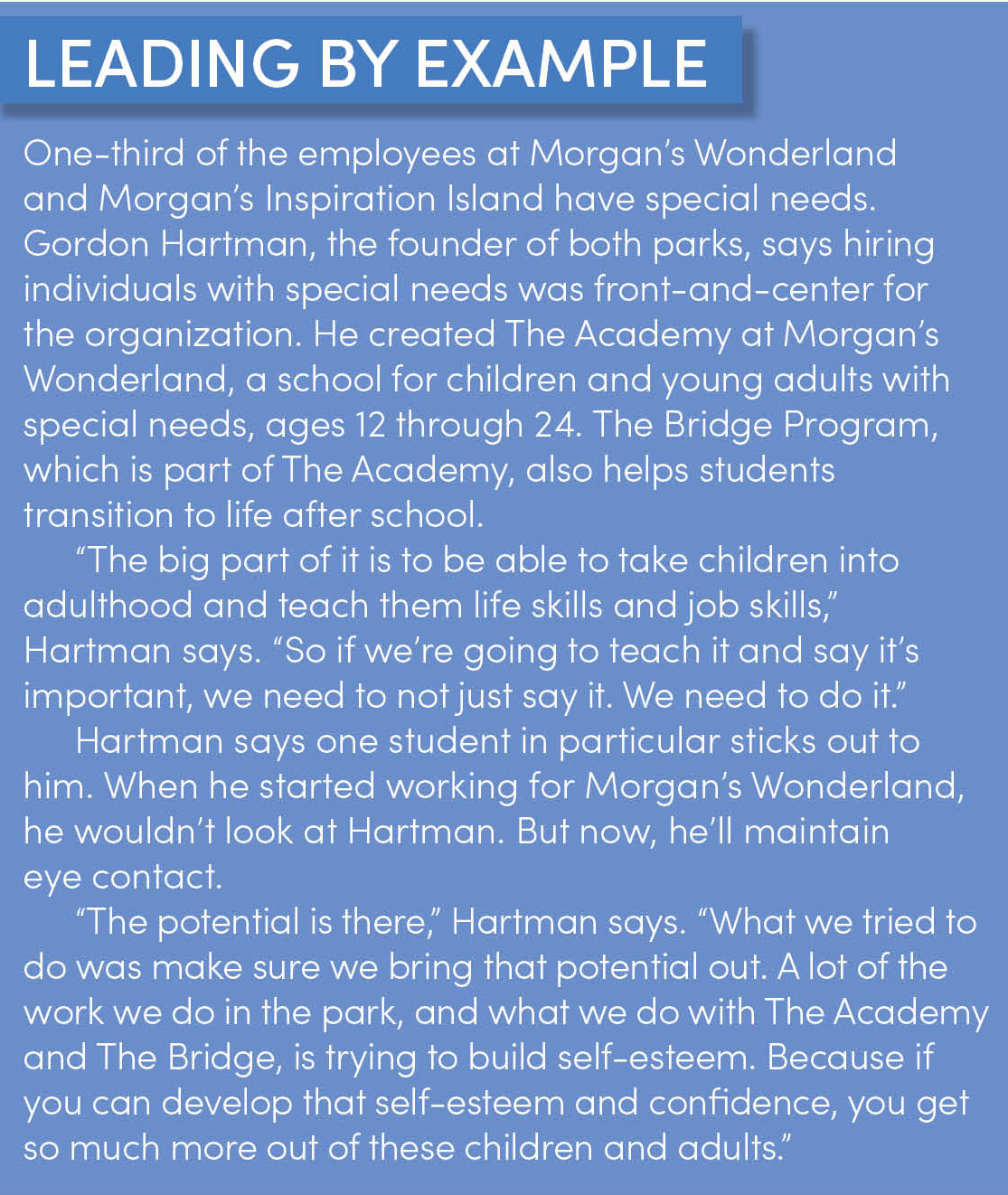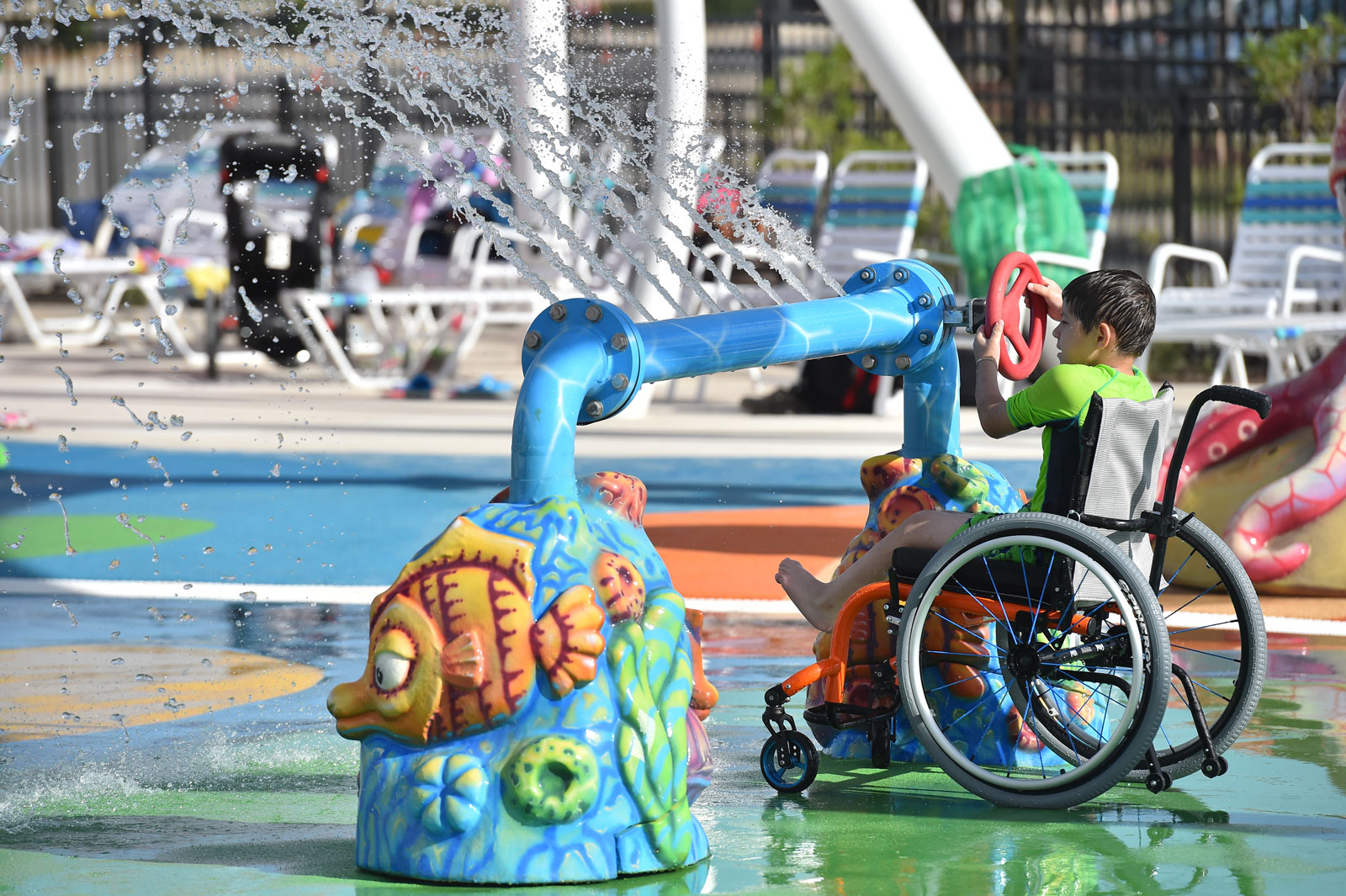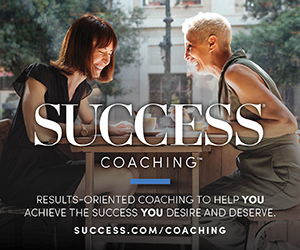When Gordon Hartman was on vacation in 2005 with his wife and daughter, Morgan, he observed something that changed the course of his life.
Related: The Day That Changed My Life
Morgan, then 12 years old, was swimming and saw other children in the pool throwing a ball. She wanted to play with them, but she was unable to verbalize that she wanted to join their game because she has severe cognitive delays, Hartman says. Morgan walked in between the children and hit the ball because it was her way of saying she wanted to play, but the three children immediately got out of the pool.
“As I’m telling you this story, I can see it right now,” says Hartman, 54. “Morgan turned to me like, I don’t get it, Dad. I just wanted to play.” Hartman jumped in the pool to play with Morgan, but when they returned to their hotel room, the scene replayed in his head.
Hartman contemplated the situation in the pool. He thought of how Morgan and other children and adults with special needs cannot go where most of us go to have fun because the rides, sounds, lights and crowds are overwhelming. He reached out to other parents and caregivers of those with special needs and asked where they took their kids.
“Many of them said, ‘There’s really nowhere to go, Gordon. We just don’t go.’ ” He spoke with Anthony Shriver, founder and chairman of Best Buddies International, an organization that works with people with intellectual and development disabilities, who said, “Gordon, there’s nothing like what you’re talking about.”
Hartman, who has blue eyes and stark white hair, had recently retired from the home-building business. He sold his real estate development company, mortgage company, title company and insurance company, and created The Gordon Hartman Family Foundation to help people with special needs. He emailed people who were following the nascent foundation to gauge interest in his blossoming idea—a theme park that was accessible to all people, no matter their impairment. Numerous people were on board to help. He decided to put some of his own money into the project and raised more for a total of $36 million.
“I said, ‘Let’s do this,’ ” Hartman says. “Let’s do this the right way and in a big way.”
Not a Special Needs Park
After three years of raising money and working with doctors and therapists to create an all-inclusive, $36 million amusement park, Hartman opened Morgan’s Wonderland in 2010 in San Antonio.
He didn’t know what to expect. A lot of questions ran through his mind. Would people who don’t have special needs want to play with those who do? Would the element of inclusion play out as planned?
The answer, Hartman says, was an overwhelming yes. Over the past seven years, the park has seen more than 1 million visitors from all 50 states and from 69 countries. In September, 10 children with special needs traveled 5,300 miles from Sweden to visit Morgan’s Wonderland.

ROBIN JERSTAD
Hartman clarifies that it’s not a special-needs park but rather a park of inclusion.
“The reason that’s so important is because for every four people who walk through the door, three people do not have special needs,” Hartman says. “One does.”
He says it’s a park for people without special needs, as well as those who have nearly any type of physical or cognitive impairment. The park hosts all types of visitors—from children who are so sick they can spend only three hours at the park and have two nurses and a doctor with them, to adults in their 80s or 90s.
The park differs from more traditional theme parks in a few ways, some of which include no balloons (for children sensitive to noise), no flashing lights (for children prone to seizures), no fluorescent lights (for children sensitive to light) and the ability for guests on special diets or tight budgets to bring their own food. Although most theme parks might be ADA Compliant—meaning they comply with federal accessibility regulations for those with disabilities—those parks might not have the atmosphere necessary for certain impairments. Morgan’s Wonderland also includes wheelchair-accessible swings, a Ferris wheel, a train and a colorful carousel.
“I’m the most blessed guy in the world, and it’s because of my daughter, who has taught me so much about the fragileness of life.”
The 25-acre park is free for any visitor with special needs. Hartman says that because of their free admission and regular free events, Morgan’s Wonderland doesn’t make a profit and in fact loses about $1 million each year. They stay in business through donations. But for him, it’s still worth it.
Related: 15 Inspiring Quotes About Giving
“I’m the most blessed guy in the world, and it’s because of my daughter, who has taught me so much about the fragileness of life.”
Perpetual Growth
Because Hartman worked in the home-building industry for 22 years, he had some logistical knowledge before creating Morgan’s Wonderland. He worked as the general contractor for the amusement park and oversaw the design, engineering, architecture and construction. When it came to hiring people to build the park, he had a specific strategy in mind: He wouldn’t hire anyone who had ever built a theme park before.

“I wanted people who were passionate about wanting to do what we wanted to do, which was accomplish something that hadn’t been done before,” he says.
Barbara Goldman, the executive director of TEAMability, a nonprofit based in San Antonio that helps people with disabilities, was part of the initial planning process for Morgan’s Wonderland. “It was my privilege to be invited to be part of a team committed to making dreams a reality for all persons with disabilities,” she says. “To make the impossible possible for them. The collaborative spirit of the team and our varied expertise and perspectives led to solving problems never before considered or addressed.”
Hartman faced a steep learning curve as he built rides and figured out why they would or wouldn’t be accessible for all. “This was something totally outside of the box for me,” he says. “But that’s the beauty of it.”
After Hartman and his team saw the success of Morgan’s Wonderland, they realized there was one more gap they needed to fill. Attendance at the park would spike in March, April and May, then dip in June, July and August because of the sweltering San Antonio heat, which regularly reaches 100 degrees. Three and a half years ago, Hartman began toying with the idea of a water park. And so, thanks to donations totaling $17 million, Morgan’s Inspiration Island came to life. The splash park opened this past June and even features specially designed wheelchairs for the water rides.

ROBIN JERSTAD
Although Morgan, now 24, cannot understand the magnitude of Morgan’s Wonderland, Hartman says she does understand that it’s named after her, which she thinks is cool.
In his office, Hartman says he has a photograph of a young boy smiling that the child’s parents sent him along with a letter saying they had never seen their son smile like this before.
“The thing that’s most rewarding are the smiles and the comments from parents and caregivers,” Hartman says. “So many of them cry and so many of them tell me stories that are unbelievable. Many of these people have come from overseas just to visit Morgan’s Wonderland, spending a day on a plane. I often ask this question: ‘Was it worth it?’ And I’ve never had anybody say no.”
Related: True Success Begins the Second You Start Giving Back
This article originally appeared in the January 2018 issue of SUCCESS magazine.


